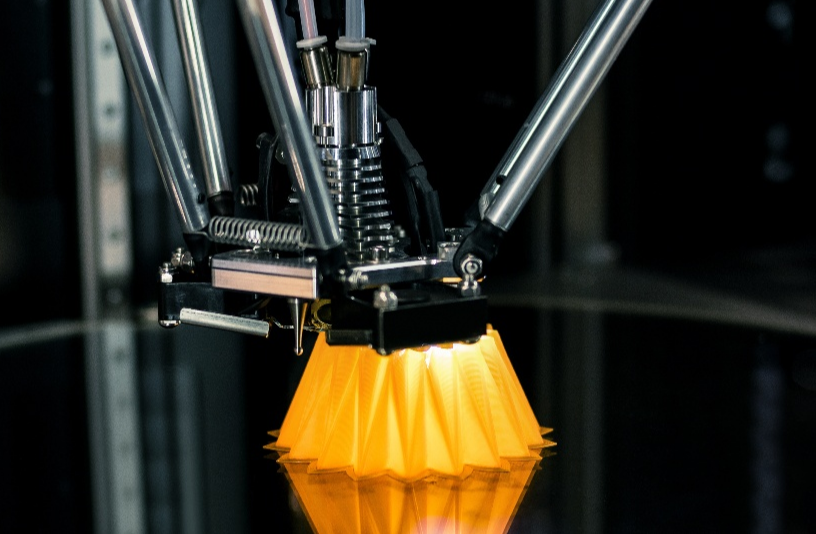May 15, 2019 | Additive Manufacturing
Additive Manufacturing’s Impact on Manufacturing: How 3D Printing is Changing the Modern Plant
 Over the last decade, Additive Manufacturing (also known as 3D printing) has garnered many headlines—from the hype of consumer 3D printing to the substance of its impact on the design and manufacturing community. The amount of ink dedicated to the technology has been substantial and well-deserved. 3D printing changes manufacturing through the way industries design, make production parts and support products in the aftermarket. In this blog post, we delve into the ways that 3D printing is changing manufacturing today. Keep an eye out for upcoming posts about the ways additive stands to further change manufacturing in the future.
Over the last decade, Additive Manufacturing (also known as 3D printing) has garnered many headlines—from the hype of consumer 3D printing to the substance of its impact on the design and manufacturing community. The amount of ink dedicated to the technology has been substantial and well-deserved. 3D printing changes manufacturing through the way industries design, make production parts and support products in the aftermarket. In this blog post, we delve into the ways that 3D printing is changing manufacturing today. Keep an eye out for upcoming posts about the ways additive stands to further change manufacturing in the future.
3D Printing Changes How Quickly Products Get to Market
A direct result of 3D printing's impact on the design process is the rate at which new products can be developed. Instead of having to wait for tooling for a given design, designers can simply print onsite or send a CAD file to a service bureau and get parts in hours or days. Previously, weeks, months, or even years were the norm. This has a compressive effect on the overall product development life cycle. Decisions on final part designs can be reached much faster because the amount of time required for effective design is compressed.
3D Printing Changes How Effectively We Design
3D printing grew up as a prototyping technology. It offered a faster way to go from an idea to a tangible model than previously imaginable. By allowing for designs to be drafted in a computer program and then sent to be printed, the time to market for new designs was drastically shortened. In conjunction with this speed, 3D printing has also helped better products come to market. With the ability to create fast iterations on tangible designs, engineering flaws, and bad ergonomics that might have taken months (and a lot of additional investment in tooling) to identify can be identified sooner and fixes incorporated into the final design. As a result, the general quality of parts is improved by designers’ ability to explore numerous designs in a shorter period of time, arriving at a better final design.
3D Printing Changes the Way We Make Tools
A lot of attention focuses on how 3D printing helps us create end-use parts. However, one of the first uses outside of prototyping was tool creation. Around a decade ago, the range of engineering thermoplastics available for 3D printing expanded significantly. This happened in conjunction with the growth of extrusion and powder bed 3D printing systems. Once these thermoplastics became available, managers and engineers began considering if 3D printing could solve unique practical challenges that they encountered on a daily basis that extended well beyond fit or form models. Applications could now include things like creating a unique jig, fixture, or custom end arm effectors to allow for better handling of items. It has been determined that 3D printers are uniquely capable of economically fabricating these often distinctive geometries that would never be suitable for traditional mass production techniques. In this way, 3D printing changed how manufacturing supports people on the shop floor as well as the ones designing and fabricating end-use parts.3D Printing Changes the Way We Fix Things
Another way that 3D printing changes manufacturing today is in how we fix things. 3D printing allows for on-demand fabrication of replacement parts. Naturally, this is not always necessary. Sometimes a replacement part is readily available at the local big box hardware store. But sometimes those parts are difficult to come by, especially for products out of production. If your collector car from the 1950s breaks down, it can sometimes make sense to print replacement parts rather than hunt them down in the global marketplace.
This is perhaps even more pronounced if you are missing a part from a 50-year-old assembly line and the holdup is costing you revenue every minute. Or perhaps you are in a forward-deployed location and your aircraft cannot fly without printing a replacement part straight away. In any of these circumstances, the ability to 3D print stopgap solutions is significant, and with the advancement in printing quality, these “short-term solutions” may soon become “long-term” ones.
Summary: Additive is Changing Manufacturing in Many Ways and More is to Come
Additive manufacturing has fundamentally changed the way we manufacture things. From design to tooling to replacement parts, additive manufacturing is a game changer. And its impact is just beginning to be felt, as the speed and capability of machines have just passed a tipping point. Read our next blog post when we talk about how additive manufacturing will come to further impact manufacturing in the years to come.

